The post This Is What It Was Like To Visit Syria Before The War appeared first on The Expeditioner Travel Site.
]]>
We had our visas but we were nervous. We had not yet been okayed to enter Syria and our Turkish van and driver had returned to Turkey. The minutes dragged as we tried to glimpse Meli, our Turkish guide, through gaps in the shaded windows of the Syrian border station. Would they be more responsive to a Muslim guide from Turkey than to American heathens? Might they send us back? Jail us? We hovered in the sunny, treeless parking lot, trying not to look too American.
It was April of 2011 and our group had shrunk from 12 to 8 as people canceled out of this tour after the State Department issued a warning that they could no longer guarantee our safety in a country on the verge of war. But the trip was on. If Meli, forceful in spite of her almost 5′ 0″ height, was willing to take us, we were willing to go.
We watched a gardener ineptly pruning roses outside the customs building. “Think of the shape of a chalice,” I recalled from learning to prune my own roses at home in Seattle. Finally, Meli came out of the building with our passports stamped for entry.
I had chosen Syria for several reasons. Going back years, I read Freya Stark’s books describing her trips through Syria while working for the British government during WWII. Her depictions in Letters from Syria fueled my enthusiasm. Also, I have always been drawn to deserts and hot sun where the past is alive.
The trip was organized by Turkish citizen and guide Meli Seval, and I would follow her anywhere to learn about culture and history of the countries of the Fertile Crescent. She has an impressive knowledge of Muslim and Christian religions and had shepherded us on four trips since we met in 1994 when she led a Rick Steves’ tour of Western Turkey.
The advent of the “Arab Spring” of 2011, when a series of uprisings brought the possibility of change in Middle Eastern and North African undemocratic governments, gave us the chance to see part of this world. We booked the eight-day trip to Syria with extensions to Jordan and Egypt. We would see the ancient sites and meet their inheritors. As we explored these countries, we would be transformed as we are by all of our journeys with Meli as to how small the world is and how much we share with those who live in places where we see history reflected every day.
Once we cleared customs, Meli introduced us to our Syrian guide, Aiman, and our driver, Mohammed. Aiman had a broad, clean-shaven chin, short, dark hair and a serious countenance hiding his good sense of humor. He spoke English well despite never having visited the West. Of medium height and stocky, he dressed in dark slacks and a white long-sleeved shirt. He was gracious and serene, protective of us. Each time we arrived at a new site, Aiman would get our attention by prefacing his words: “This is important.”
We piled into Mohammed’s van and headed for Aleppo, stopping at the nearby Bab al-Hawa (Gate of the Winds) which lies between Turkey and Syria, an archway over the old Roman road that led to the ancient capital of Antakya where we’d spent the previous night. We marveled that the archway was still standing after millennia. We strolled along the weathered, dust-colored stone blocks as though we were pilgrims from 2,000 years ago making our way through the Roman province or, more recently, walking with another intrepid British author and archeologist of the Near East, Gertrude Bell, who was here in 1905 and wrote The Desert and the Sown.
Our next stop, surprisingly, was a cathedral less than an hour northwest of Aleppo dedicated to Saint Simon. A devout Muslim country and here we were at an Orthodox Christian church. Churches are not so unusual in Syria: Once we reached Aleppo, we saw active Armenian, Greek Orthodox and Catholic churches — over 40 listed at the time we were there. But the focus on the next day in Syria was a trip to the 14th-century Great Mosque of Aleppo with its ivory enriched, wooden pulpit in the Prayer Hall. The minaret tower survived an earlier fire so it is older, dating from the 11th century. Each of its five tiers was incised with script from the Koran.

When we toured the Great Mosque in Aleppo, the women in our group were required to dress in full abaya, head to toe, in skirts and long head coverings exposing only our faces. These sweetly-flowered cotton nightie-like garments were available at the entrance and we made a fetching picture, like a slumber party of nuns. The Central Courtyard resembled an amusement park; we saw women washing and children playing ball while the men chatted and smoked the narghile or hookah.
“Let’s get going,” Aiman said, herding us back to the van through the narrow alleys for our last night in Aleppo, one of the oldest continuously inhabited cities in the world and rife with medieval Islamic atmosphere. Our tiled 15th-century house in the old quarter of the city was marked by giant bronze doors. The bathroom had a tub carved of marble, as comfortable now as when originally installed. I drew a steamy bath. Although short in length, its pleasing curves fitted the human body like a marble Tempurpedic.
Everywhere we went in Syria in 2011, from the smallest café to the fanciest restaurant, from kitchen supply store to scarf shop, we saw prominently displayed photos of the weak-chinned ophthalmologist president, Bashar el-Assad. I didn’t know if this was a politically savvy decision or a mark of respect, or both. It was particularly disconcerting to see his face stuck up in a tree at the tea stand in Palmyra where we stopped for refreshments.
I remember trying to avoid the tout on the motorbike at the expansive site of Palmyra who finally caught up with me and sold me a silver necklace. It cost about $6 but, at the time, I just wanted to drink in my surroundings without being hounded to shop. He had maybe three or four pieces of jewelry on offer hidden in the pockets of his baggy djellaba. Once I bought the necklace, other motorbikes appeared out of nowhere with offers of matching earrings and bracelets. I resisted and continued my trek through the ruins.
Palmyra was ruled by Zenobia in the 3rd Century and we toasted her at the site. According to Edward Gibbon in his 18th Century classic The Decline and Fall of the Roman Empire, Queen “Zenobia was esteemed the most lovely as well as the most heroic of her sex. She was of a dark complexion (for in speaking of a lady these trifles become important). Her teeth were of a pearly whiteness, and her large black eyes sparkled with uncommon fire, tempered by the most attractive sweetness . . .”
The sun was setting and the rays caught on the golden limestone Tower of Bel as it slipped behind the horizon. The magical structures seem to glow impossibly bright in the waning light. Dedicated to the Mesopotamian god Bel in 32 A.D., the temple was one of the best preserved structures at Palmyra.
We only saw few other tourists on this trip. Occasionally, we would encounter a local family on a picnic or a few Europeans, but we did not see any other Western visitors during our time in the country. Basking in our good fortune to have these spectacular sites to ourselves, we did not dwell on why this was so until the sixth day of our trip. Departing in the morning, Aiman, whose cell phone number had been given by tour members registering with the State Department, received a text message from the IRC Damascus (International Red Cross): “Independence Day rally currently in Ummawiyeen Circle. Even peaceful rallies may be unpredictable. Be aware of surroundings.” We would be in the heart of the city for our final night in Syria.

Later on, as we traveled north, we noticed Aiman continuously on the phone. We watched without understanding as he took calls and murmured to Meli. We were planning to spend the night in Hama just north of the city of Homs. The area is surrounded by vast, lush fields of wheat, potatoes, and nut and olive trees as it has been for millennia. The noria, or water wheels, of Hama have been used for 600 years to lift the water from the River Orontes up to aqueducts to irrigate these fields and provide drinking water. Only 13 of the 30 original water wheels, each about 30 to 40 feet in diameter, remained at the time of our visit. When we drove into town to see them, we were forced to turn back by police barricades.
“No photos,” ordered Aiman when he saw some of our photographers trying to snap surreptitious shots of the riot-gear clad police through the windows. After awkward U-turns in the narrow streets of Hama, our driver Mohammed took us back to the highway. We found a roadside hotel in Maraat al Numan for the night and attempted to see the water wheels the next morning. The streets were quiet and we made our way without incident to the river.
“Look at the size of them!” I said. Although the wheels were not turning with their characteristic moaning sound, we were awed by their girth and width as the River Orontes flowed along its northbound course toward Turkey.
We continued on to Damascus where our State Department messages and concerned phone calls from home multiplied. Reassuring anxious family by email and telephone, we persevered, enjoying our final days with steam baths at the hammam and shopping before leaving Syria, driving south to Jordan.
As Mark Twain said in The Innocents Abroad in 1869, “To Damascus, years are only moments, decades are only flitting trifles of time. She measures time, not by days and months and years, but by the empires she has seen rise, and prosper and crumble to ruin. She is a type of immortality . . .”
We travel to connect with other cultures, to view history first-hand and sometimes see it in the making as we did in Syria. We recall Palmyra from the road above the now-bombed site where we toasted past civilizations. The Tower of Bel, along with a number of other structures, is gone, blown up and shattered leaving only our photos, our memories.
The UNESCO world heritage site of the Great Mosque no longer has its beautiful minaret. I feel sad as I read about its destruction in the news.
President Bashar Assad’s government and the rebels trying to overthrow him accused each other of being to blame for the destruction to the Umayyad Mosque, a UNESCO world heritage site and centerpiece of Aleppo’s walled Old City.
“This is like blowing up the Taj Mahal or destroying the Acropolis in Athens. This mosque is a living sanctuary,” said Helga Seeden, a professor of archaeology at the American University of Beirut. “This is a disaster. In terms of heritage, this is the worst I’ve seen in Syria. I’m horrified.”
The border crossing at which we waited while the man pruned roses near the Bab al-Hawa gate is now closed on the Turkish side.
Often I think of drinking juice and eating cookies with Aiman and his family in their home in Aleppo, an apartment now probably rubble. We could see ourselves in them: the gentle joking between the two brothers, the fondness of his daughter for her dad, his wife Safa’s gentle smile and hug for me when we left. As they brought us into their circle, they broadened our own.
Throughout our travels in Syria, I was struck by the generosity of the people in the brief conversations we shared in markets or restaurants where we heard various Syrians express the same sentiment.
“We welcome you as American people although we may not like what your government does,” a scarf vendor explained to us.
When I started writing this piece last fall, the number of Syrians killed was said by the United Nations to be about 125,000 people; now it is closer to 500,000 with 4,000,000 displaced in Turkey or Europe while 6.36 million people have no home within the country. The life expectancy has dropped from 70 in 2010 to 55.4 in 2015, according to The Guardian.
“Exhausted Syrian refugees swim ashore on the Greek island of Lesbos,” droned the television news reporter as we watch in our Seattle living room recently. The refugee crisis for Syrians trying to enter Europe sounds a personal note as we learn of Aiman and his family progressing from the refugee camp in Turkey to an apartment in Izmir and finally on to transient quarters in Holland.
His Facebook update reads: “I lived in the oldest continuously inhabited city in the world. But now I’m lost in no where.“
We are rooting for him and for all of those fleeing the violence of war.

[Image #1 and #3 via Mike Dedrick, and Image #2 via Mark Lammers]
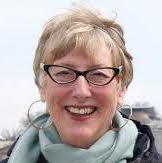 Mary Kay Feather is a Seattle native who has one foot in the jetway bridge. A retired reference librarian, she is a graduate of Martha Gies’s Traveler’s Mind Workshop and studies at Richard Hugo House. Her occasional writing can be found on Featherbooks.net.
Mary Kay Feather is a Seattle native who has one foot in the jetway bridge. A retired reference librarian, she is a graduate of Martha Gies’s Traveler’s Mind Workshop and studies at Richard Hugo House. Her occasional writing can be found on Featherbooks.net.
The post This Is What It Was Like To Visit Syria Before The War appeared first on The Expeditioner Travel Site.
]]>The post The Syrian Refugee Crisis: My First-Hand Account From The Turkish Border appeared first on The Expeditioner Travel Site.
]]>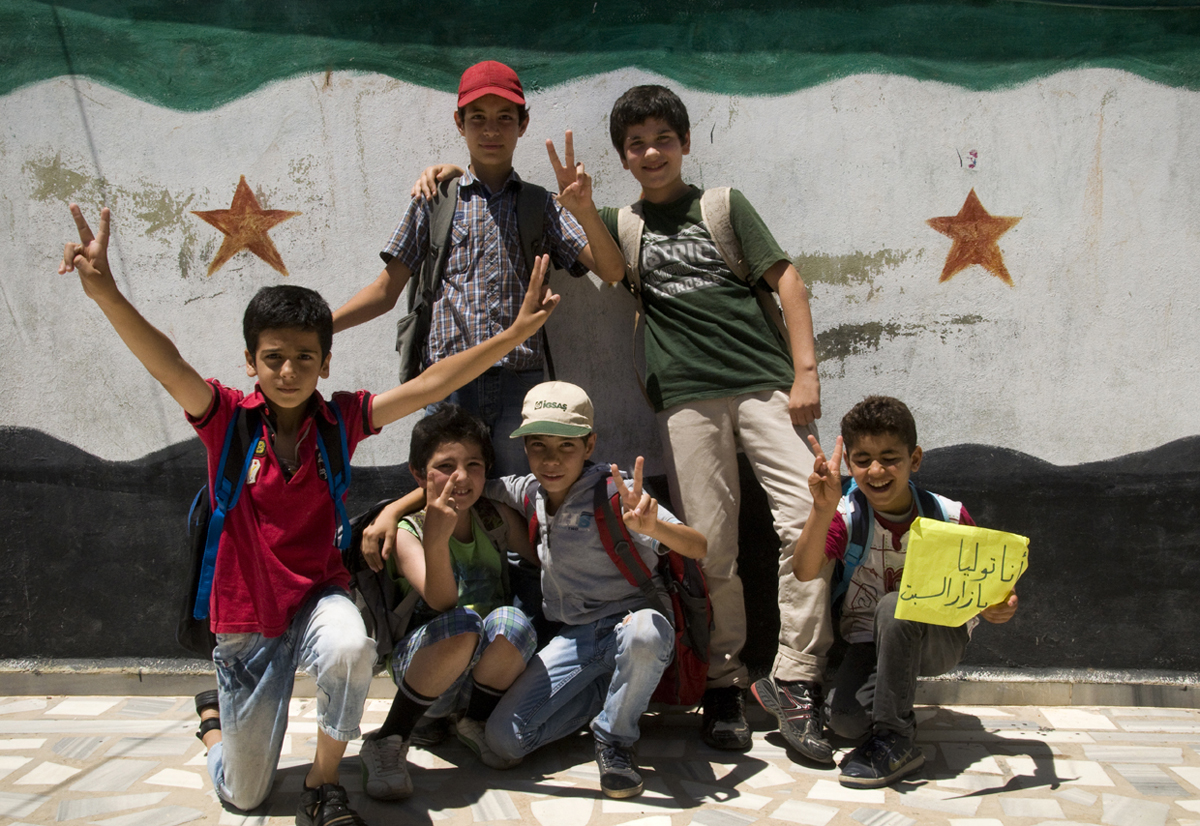
More than three years have passed since protesters took the streets in Syria. What began as a call for democracy, a mass movement to end Bashar al-Assad’s 43 years of family rule, has turned into a foreign-funded proxy war without a foreseeable end.
So far, the war in Syria has produced an estimated 150,000 casualties, displaced about 9 million people and reignited a polio epidemic among children, all while threatening to destabilize the entire Middle East with the rising number of extremist militants being drawn to the conflict. The consequences of the Syrian war have been undeniable, yet questions remain over what accountabilities and responsibilities, if any, fall upon Western nations.
With these thoughts in mind, I visited the Turkish-Syrian border for six weeks in the summer of 2013 to volunteer at a Syrian refugee school with my partner, Alice Bernard. The core problems Syria faces today are the same it faced during our visit; the main difference is their severity has increased as refugees continue leaving Syria, overburdening neighboring countries, while jihadist rebel fighters continue entering Syria with the hopes of establishing an Islamic state. The longer the war continues, the worse both situations will become.
Alice and I worked in a small town called Reyhanlı just as outflowing refugee numbers spiked in June of 2013. During our stay, we would analyze the war by collecting personal accounts from civilians pouring across the border. Considering that the international debate towards Syria has changed little over the last year, I am now sharing our experience in effort to provide insight on the war and, with hope, provide some guidance for the ongoing discussions on how best to approach the conflict as it rolls into its fourth year.
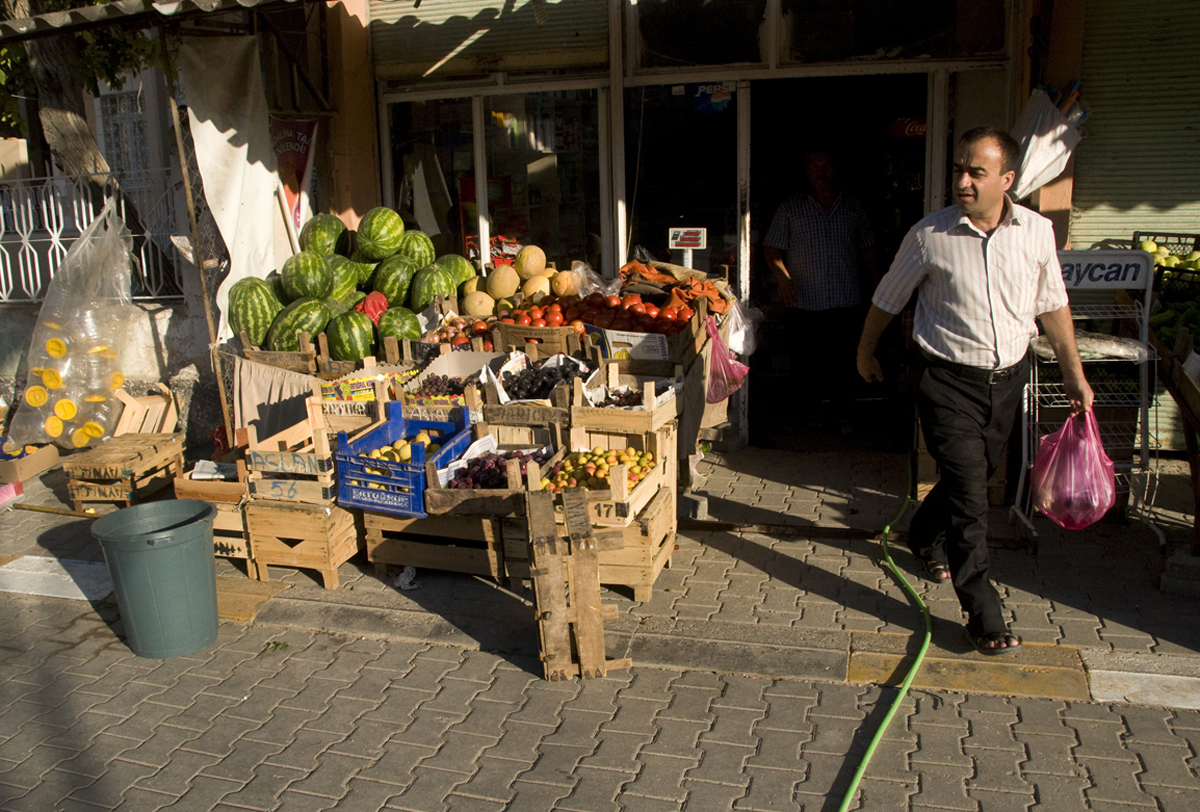
One Mile to Syria
Two car bombs went off in the center of Reyhanlı one month before we arrived. The taxi driver pointed out the blast sites, a cluster of charred, windowless buildings surrounded by construction barricades. He said 50 people had died, 140 were injured. It was “the worst terrorist attack in Turkey’s history,” the media claimed.
We got a first-hand account from Hussein haj Ahmad, an English teacher from the Idlib region who would become our main interpreter in Reyhanlı. Not only did he escape Syria under government bombardment, but he was sitting at a café in Reyhanlı’s town center, sipping tea when the two car bombs exploded. Hussein fled the scene so fast he lost his sandals and ran barefoot over broken glass. He still had the scars to prove it.
Once we left the center and its blackened buildings, the taxi driver turned left and we headed towards the edge of town until we reached Al Salam school — or “Peace” school — a Canadian-funded institution for Syrian refugees less than one mile north of the Syrian border.
Alice and I entered the front office, a room with one computer surrounded by mostly empty shelves, and it was there that we would meet our first student. The young boy balanced himself on two crutches as he shook my hand. There was a scar on his cheek and when I looked down I saw one of his legs was missing from the waist down. A missile struck his home in Syria. He was 12 years old.
The boy’s eyes were bloodshot. He didn’t seem to get much sleep, but his face brightened when he asked us to play soccer. We agreed and spent the next 20 minutes kicking the ball around the school courtyard. He proved to be fairly agile with his crutches.
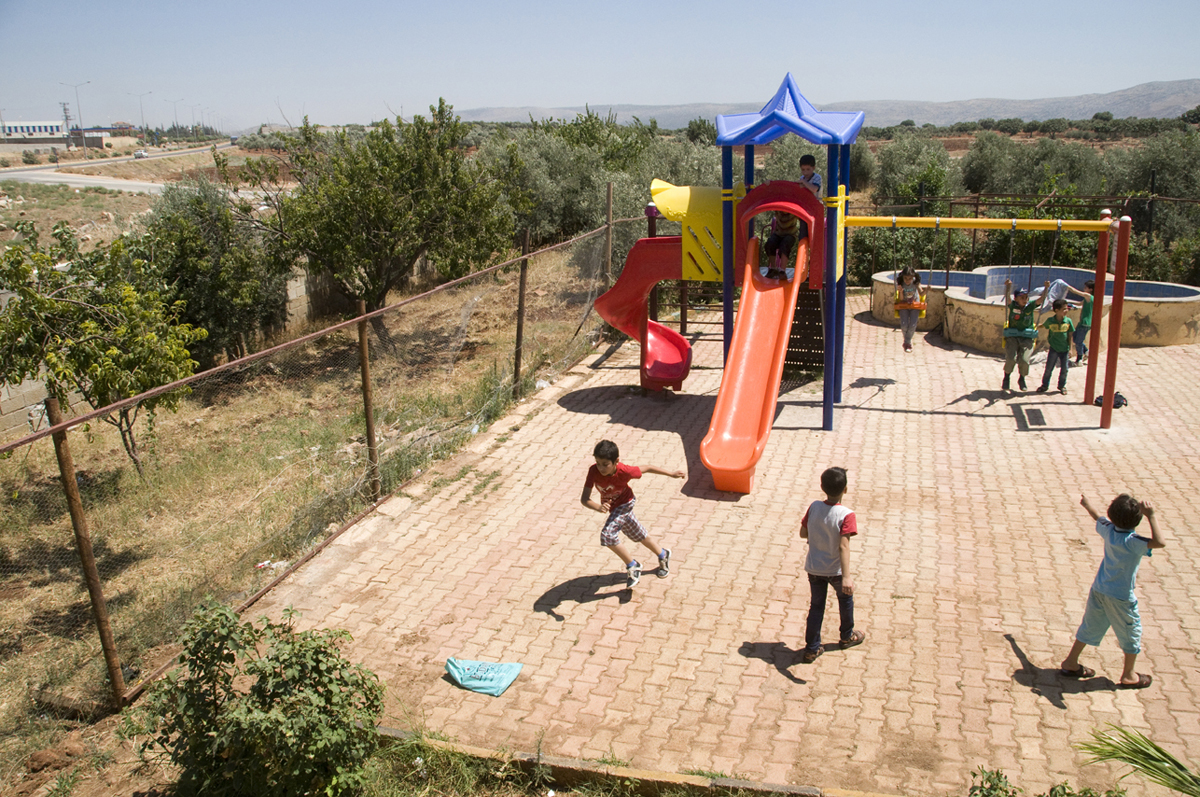
“We want to provide a place for the children to learn, play and feel safe after so many years of war,” Hazar Al-Mahayni, co-director of Al Salam school, told us via Skype that afternoon. “Some of them have seen terrible things and we just want to help them cope with those experiences by giving them a safe place to be children again.”
Hazar explained that our main responsibility at Al Salam was to organize activities for the students — sports, arts, whatever we could think of to “help them forget the war.” She spoke to us from her living room in Montreal where she ran the school by night and worked as a pharmacist by the day.
Hazar went on, saying few people paid attention to Reyhanlı before the war broke out. The small farming town was barely known as an exporter of watermelons and cucumbers when refugees began crossing the border. International aid groups and 24-hour media coverage soon followed as new hospitals opened to treat wounded soldiers and civilians fleeing the violence. Within a matter of months, the town’s population doubled, and its rents quadrupled. Locals profited heavily from the influx of Syrians in need.
To complicate matters, children made up more than half of the total Syrian refugee population, only heightening the need for education centers in dense refugee areas such as Reyhanlı. When Al Salam school opened in October 2012, Hazar said she had enough space for 300 children. To her surprise, more than 900 children showed up. She accepted them all and ran two full school sessions — one in the morning and one at night. Today, the school building is undergoing construction for a second floor expansion and currently educates 1,200 children.
The introductory conversation then turned to the recent car bombs in the town center. Those responsible for the attack were never identified. It could have been a number of groups on both sides of the border, but infuriated locals blamed Syrian refugees for bringing the war across the border. Cars with Syrian license plates were vandalized, their windshields smashed, and anti-Syrian threats were spray-painted on walls as Syrian families were told to leave the town.
Our interpreter, Hussein, did not leave his apartment for 10 days after the explosions. He stayed inside, without food, out of fear for being attacked by angry mobs. The protests were subdued only after Turkish Prime Minister Recep Tayyip Erdoğan visited the town, insuring residents they would be reimbursed for their losses while reaffirming that Syrian refugees would be welcome in Turkey as long as fighting continued across the border.
This was the context under which we would work.
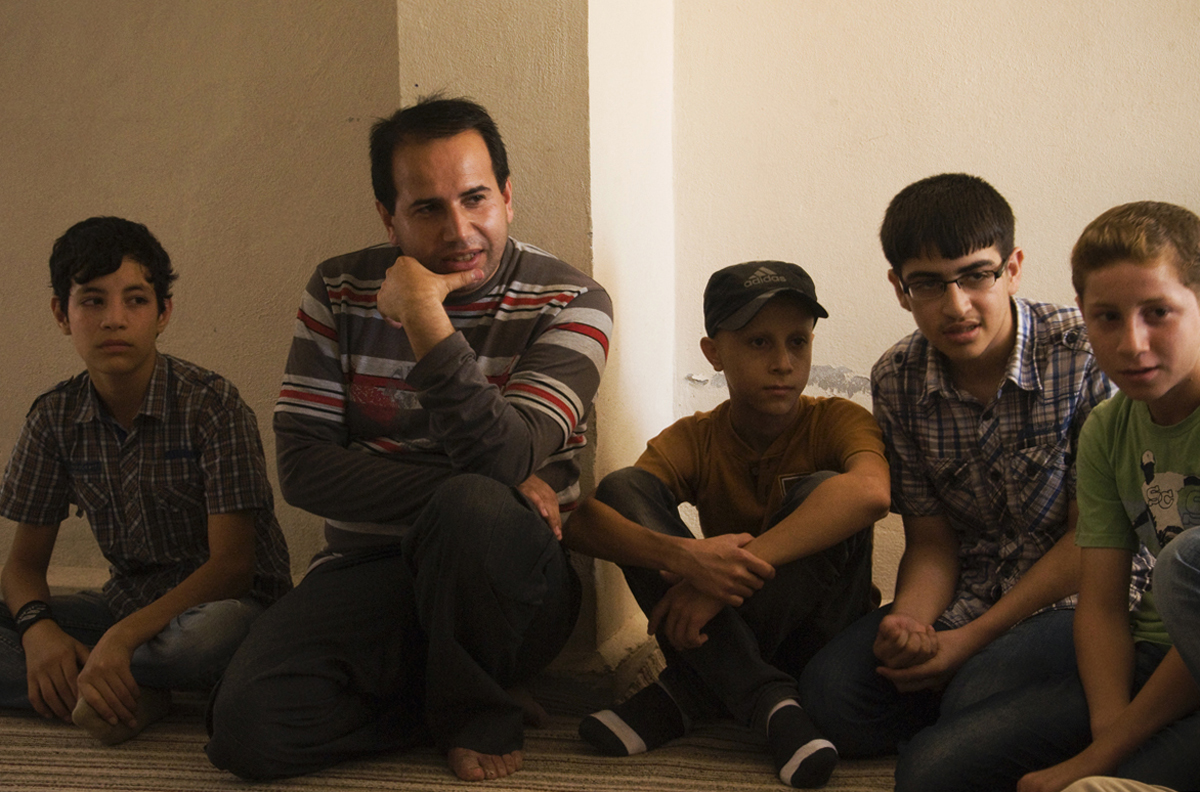
“You Come From a Democracy”
Over the next six weeks, Alice and I organized a variety of activities for the students using the school’s limited resources and our limited Arabic. Together we made arts and crafts, created recycling and waste awareness programs, invented sports and planted vegetable gardens.
Still, it was the school’s math professor, Abdulghaffar Abdulla Othman, who would propose the most compelling project we undertook at Al Salam. He wanted to teach students about democracy: what it means to vote, to choose leaders, to organize elections.
“You come from a democracy,” he told Alice and I. “You can teach the students how elections work because we never had real ones in Syria. When this war is over, we will have a democracy in Syria and the younger generations need to know how to vote.”
To achieve Abdulghaffar’s vision, the three of us organized student council elections. Each grade level would vote for two representatives and, in the process, learn about democracy. Students made speeches, campaign slogans and promises to better the lives of their fellow classmates.
Throughout the project Alice and I worked closely with Abdulghaffar, often planning the elections from his home as Hussein translated our conversations. Sitting over a never-ending stream of tea, we learned Abdulghaffar had worked for the U.N. in Palestine. He was also in the Syrian military at the time when the uprisings began, serving his mandatory duty as an accountant. He remained at his post as long as he could, but fled after government forces killed his brother-in-law. His wife was pregnant with their first child and he wanted to find a safe place for his family.
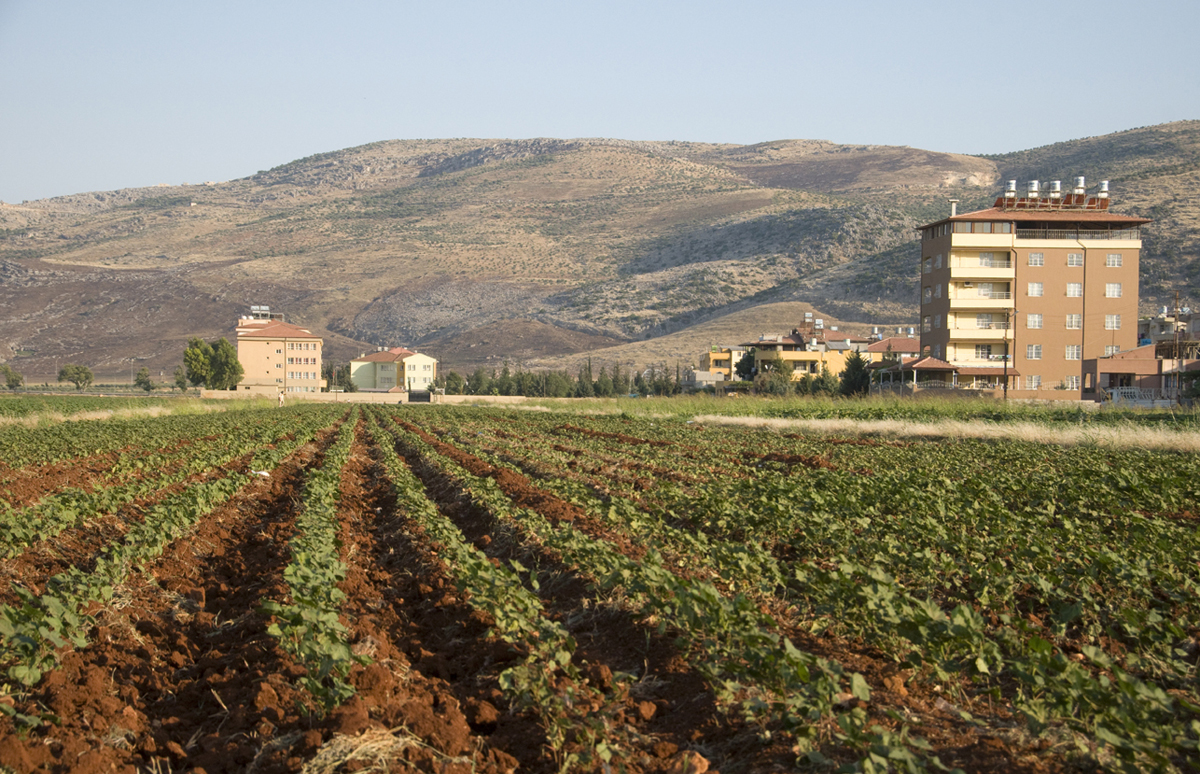
“They hang soldiers that abandon the Syrian army,” he said. “ I would’ve been killed if they found me so I travelled to Reyhanlı alone. My wife and family joined me here about a month later.”
But some never made it. Five of his relatives died by sniper fire before they could leave Syria.
“They weren’t even protesting,” Abdulghaffar said. “My cousin was shot while he was painting a house in the middle of the day. He was standing on scaffolding and fell after the bullet hit him. He was just working.”
“His father was also shot to death on the same day,” he continued. “He was sitting in his house, watching television when a bullet came through the window. The Syrian Army kills for fun. Violence is just a game for them.”
Yet for many Syrians, the violence began long before the Arab Spring of 2011. Opposition to Hafez Al-Assad’s Ba’ath Party peaked in the early 1980s, resulting in the Hama Massacre of 1982 where government forces occupied the city for 27 days, causing 20,000 to 40,000 deaths. An accurate figure will never be known as many residents were imprisoned and died in one of many political prisons.
Abdulghaffar’s uncle was one of the few prisoners that made it out. In 1981, he was jailed for having friends in Syria’s Muslim Brotherhood. Though his uncle was an apolitical high school physics teacher, he would spend 15 years of his life in an underground prison where he was tortured on a daily basis.
His name was Abdul Abdurrazzak Othman and he had also taken refuge in Reyhanlı. When he heard Alice and I were collecting accounts from Syrian refugees, he invited us to his apartment.
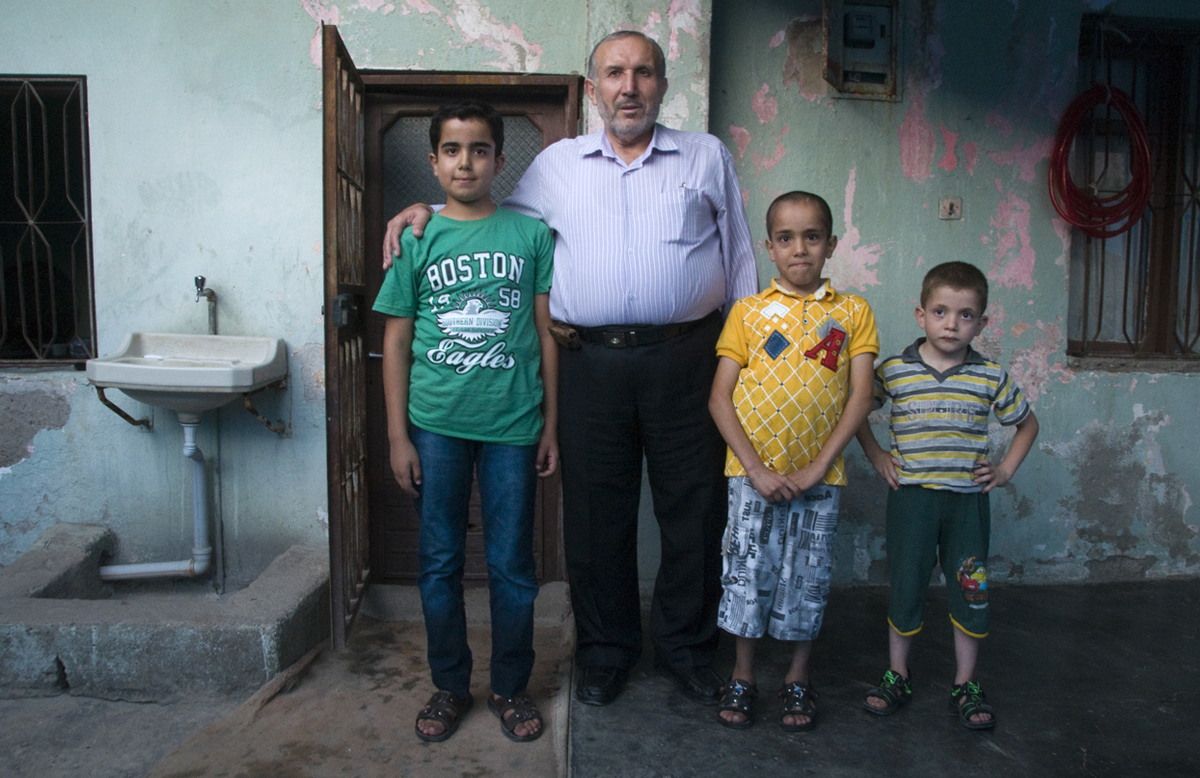
“They Kept Us Underground”
In what became the longest four hours of my life, Abdul calmly described every single torture technique inflicted on his body as Hussein translated in horrific detail. At one point, Abdul pulled down his pants to show us a gap in his upper thigh, a missing piece of flesh from his leg, where he was repeatedly beaten with wooden rods over the years.
“They always hit me here,” Abdul said. “One military commander would watch while two or three guards beat me with the sticks. The commander was there to instruct them where to hit me. Usually he would focus the blows on one part of my body. Create as much pain as possible.”
Abdul insisted we hear his stories to show the extent of oppression and brutality some Syrians had endured under al-Assad’s Ba’ath Party.
“They kept us underground, between 100 to 200 men in each prison cell. No windows,” he said. “We could barely breath. The air was so thick we made a rotation. Each man would get one minute to lay down by the entrance and breath the air that came in through the crack under the door.”
When I asked him how he made it out, how he coped emotionally with the circumstances, Abdul did not understand the question. I rephrased the sentence, but he still wasn’t sure what we were asking.
“Allah,” he said, pointing to the sky. “What do you mean by ‘emotional pain’?”
He was clear. There was no room for weakness in those prison cells and to this day, Abdul’s jail, better known as Tadmor prison, remains open for government adversaries.
His was one of many stories we gathered during our time in Reyhanlı. With the help of Hussein and Hazar via Skype, Alice and I interviewed a former soldier that watched his best friend bleed to death in his arms. We spoke with a young woman who fled Syria on foot, crossing desert mountains into Turkey with her family after being put on a government “black list.”
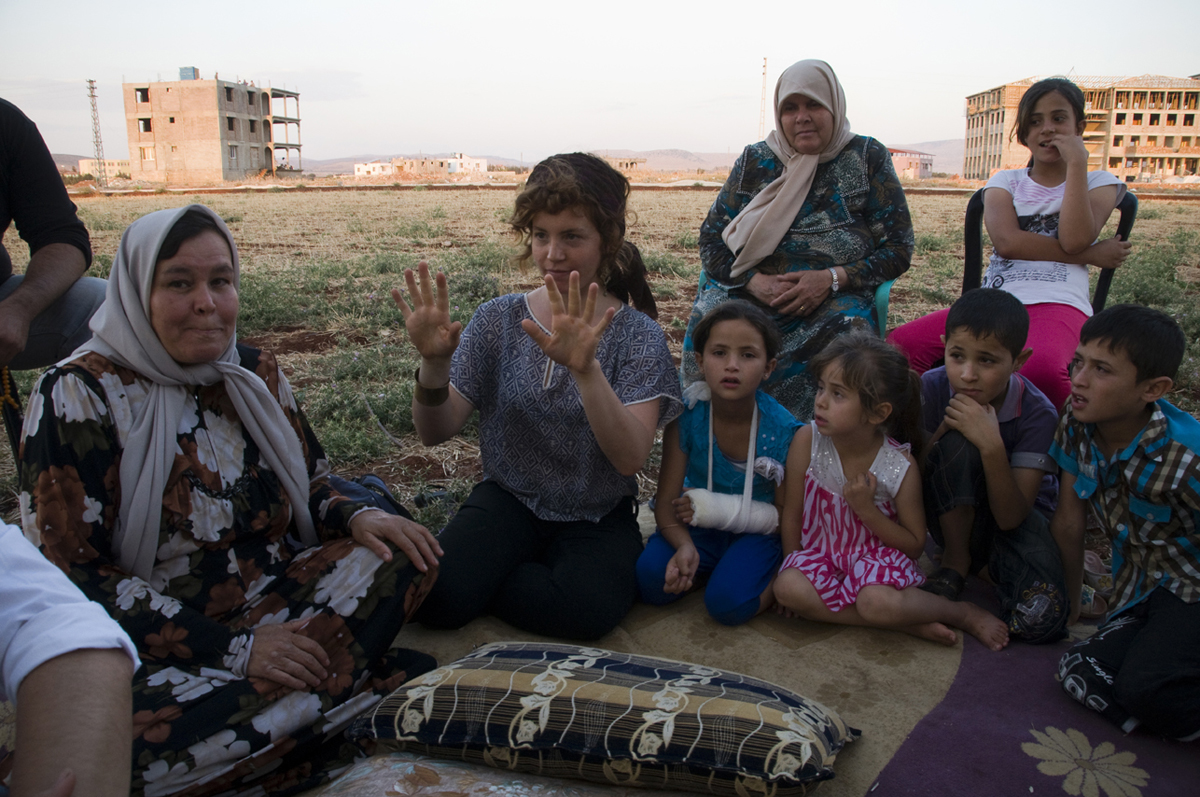
We listened as a young man described jumping from rooftop to rooftop, avoiding sniper fire as armed forces occupied his hometown. Hussein, himself, had spent 45 days in cave with a broken leg, watching from a distance while his town was destroyed by air raid after air raid.
Alice and I also interviewed Lieutenant Ahmad al-Soud of the Free Syrian Army, the secular rebel group that was fighting Assad to establish democracy in Syria. Reyhanlı was known to serve as a refuge for rebel fighters seeking rest or medical attention between military assaults and we found the lieutenant standing outside a local hospital after visiting his wounded soldiers.
Speaking sharply and glaring at us through his dark eyes, Al-Soud said religious extremists were gaining momentum in Syria. The longer the war went on, the more powerful Al-Qaeda-style rebel groups would become.
“Russia, Iran and Hezbollah are helping Assad, but no one is helping the resistance,” Lt. Al-Soud said. “Think about it. Our people have been at war for more than two years now and if someone, anyone, offers them help, of course they’re going to take it. The trick is that if you receive arms from Al-Qaeda they will make you work for their organization. That’s how the recruitment process starts.”
He also said whatever we read in the news was false. Reporters had no idea what was going on because the army generals they interview barely understood the war. There were too many separate parties with conflicting interests in the war and the Free Syrian Army was being fired upon from all sides.
Soon after the interview, Lt. Al-Soud returned to the front lines in Idlib where he led a unit of more than 3,000 soldiers. Six months later, he would be kidnapped by a jihadist rebel group. It is unknown whether he is still alive.
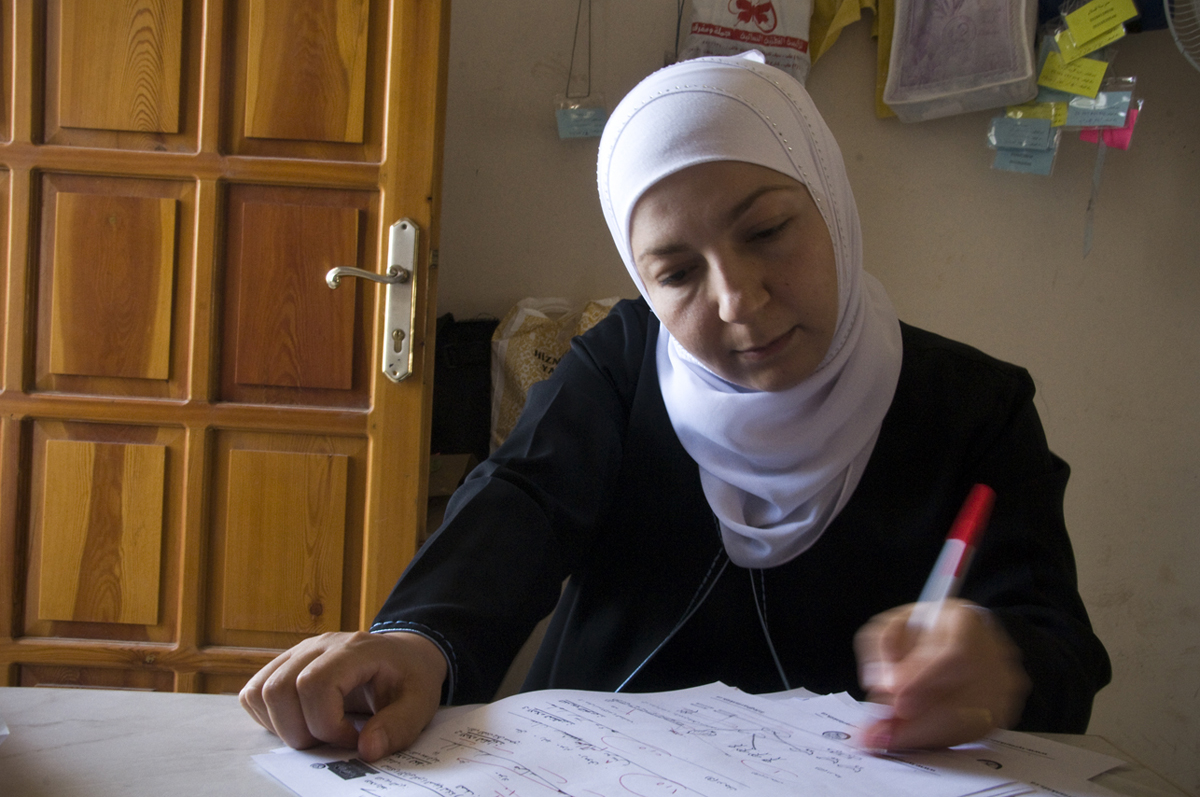
“We Were Fighting for Democracy”
“Terrorists hijack not only planes, but revolutions,” said Muhammad Hallum, a 23-year-old Syrian peace activist who had been part of the initial street protests. “We were fighting for democracy, but now it seems we’re fighting for religion.”
“First, my region was occupied by the Syrian army, then when they left, the Al-Qaeda groups took over,” he added. “They say they are Muslims, but I don’t think so. Islam, in its roots, is peace.”
The Syrian conflict, like similar uprisings that took root during the 2011 Arab Spring, began as a civil war between an oppressed population and their ruling dictator. Since then, the war has become a stalemate, drawing involvement from neighboring countries, as well as foreign Al-Qaeda-style networks and Kurdish militias who entered the conflict with intentions of forming new nations for their ethnic groups and followers.
Currently defined as a regional proxy war divided along Sunni-Shiite lines with implications that could reshape regional and international politics, the Syrian conflict has no clear solutions and, regardless of the outcome, it is Syria’s youngest generations that will suffer the war’s greatest impacts.
Abir Hashem, a first grade teacher at Al Salam school, told us many of her students would be permanently scarred by their experiences.
“The influence of war has been too heavy on the smaller children. They are young and they relate everything to violence,” Abir said. “When I draw pencils on the board, they see missiles. When I draw a cloud with rain drops, they see a plane dropping bombs.”
“I am like any human being,” she continued. “Maybe I look strong when I stand in front of the classroom, but most of the time I am trying not to cry. The children tell me so many stories. How their fathers died, how they lost their friends, everything. They are so small.”
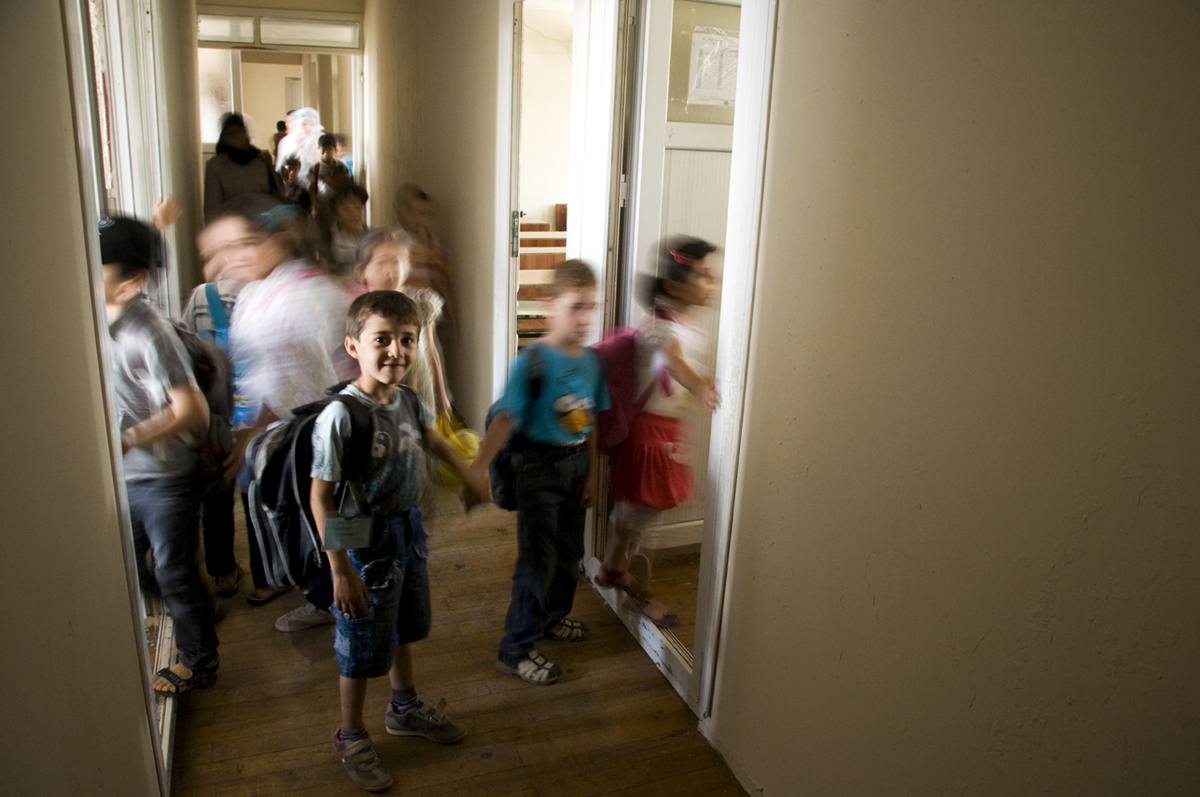
Throughout our stay, Alice and I worked with countless children that never attended school in their lives. Three years of war has interrupted primary education for younger students and when they crossed the border into Reyhanlı, many arrived filled with anger, confusion and aggression.
Fistfights were not uncommon in the courtyard. Antisocial behavior was also prevalent. When given crayons, some children would draw tanks destroying houses and cities filled of fire, but these weren’t imaginary scenes of war, the children were drawing their houses and their cities filled with fire.
One student, a seven-year-old boy, had the unfortunate experience of being home when government forces broke in to gather intelligence. He was forced to watch as soldiers interrogated and tortured his uncles, killing one of them in the process.
We never knew what the students had experienced before arriving in Reyhanlı, but Alice and I noticed the school environment had a positive effect on the refugee children. The longer students attended Al Salam, the more they calmed down and the more they became children again, which was Hazar’s ultimate goal in founding the institution. Al Salam school provided a much-needed safe haven for the young refugees to socialize, run freely and, most of all, play.
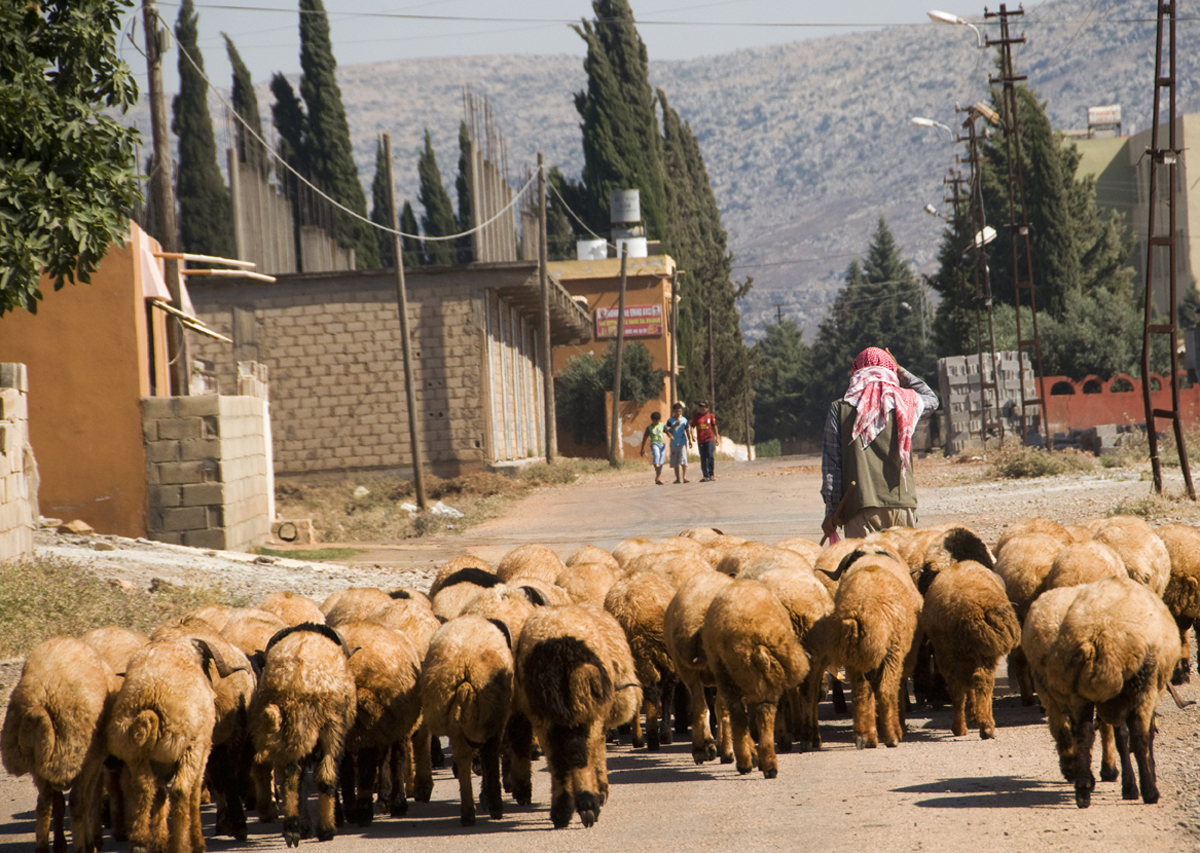
Leaving Reyhanlı
Today, after more than three years, the Syrian war could easily drag on for another five to ten years. Where there’s a weapon, there’s a will and new fighters will replenish the old ones as long as foreign powers supply ammunition and funding.
Several thousand soldiers of European, North American and Asian origin are currently fighting in Syria, some joining jihadist militias without speaking a word of Arabic. On Bashar’s end, Putin, the Iranian government and Hezbollah are not likely to downgrade their support any time soon. Meanwhile, the secular Free Syrian Army seems weaker than ever before.
At the same time, the war has displaced nearly half of the Syria’s population. Lebanon, a small country itself, recently registered its one millionth Syrian refugee.
As of March 2014, Turkey has taken in more than 600,000 Syrian refugees. Jordan has almost the same amount. At the moment, the war has caused the largest refugee crisis since the Rwandan Genocide in 1994. Yet the same question remains today as when I left Reyhanlı in July: What is the West’s responsibility regarding the Syrian war?
Syria provides a new test for moral and security dilemmas that have faced western nations in the past. While military intervention is not likely to produce better results at the moment — nor is it warranted — perhaps the international community has an obligation to better assist Syrian refugees and increase humanitarian aid to camps in neighboring countries.
Still, material support is only one part of the equation. Many Syrian refugees told us they simply wanted to be acknowledged. Like Rwandans 20 years earlier, they felt abandoned by the international community as armed militias have overtaken their country and commit war crimes without consequences.
The war may be occurring on Syrian ground, but the battle lines represent a larger regional conflict between Sunni and Shiite ideologies, and between Saudi and Iranian dominance. From beginning to end, it is the Syrian civilian who bears the weight of this war. On one shoulder stands Saudi Arabia, the United States, Turkey and Qatar while the other holds Iran, Russia, Hezbollah and China. If and when these stacks fall and military intervention is undertaken in Syria, the question remains: Where will the Syrian civilian stand when the dust settles?
This article was originally published on TowardFreedom.com.

/
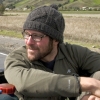 Diego Cupolo is an independent journalist, photographer and author of Seven Syrians: War Accounts From Syrian Refugees. He serves as Latin America regional editor for Global South Development Magazine and covers international affairs as a freelance journalist, having reported on Syria, Turkey, Bulgaria, Nicaragua, Peru, Argentina and Chile. His work has appeared in The New Yorker, The Atlantic, The Associated Press, The Village Voice, The Australian Times, Discover Magazine, UpsideDownWorld.org and Diagonal Periódico.
Diego Cupolo is an independent journalist, photographer and author of Seven Syrians: War Accounts From Syrian Refugees. He serves as Latin America regional editor for Global South Development Magazine and covers international affairs as a freelance journalist, having reported on Syria, Turkey, Bulgaria, Nicaragua, Peru, Argentina and Chile. His work has appeared in The New Yorker, The Atlantic, The Associated Press, The Village Voice, The Australian Times, Discover Magazine, UpsideDownWorld.org and Diagonal Periódico.
The post The Syrian Refugee Crisis: My First-Hand Account From The Turkish Border appeared first on The Expeditioner Travel Site.
]]>The post 5 Of The Most Beautiful Countries You Should Think Twice About Visiting appeared first on The Expeditioner Travel Site.
]]>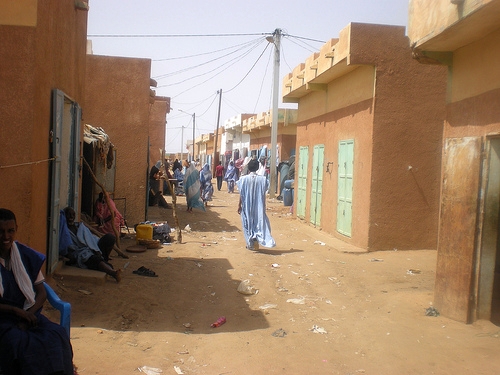
The U.K. Foreign Officer recently compiled a list of countries that: a) you should not travel to, and b) those that you should travel to only if you must. These warnings, as listed by The Telegraph, are focused in areas of the world that have experienced political, social and economic turmoil within the past few years. As a result of various stirrings, springings and uprisings, things on the ground here are chaotic, making it difficult for Westerners to travel in these countries as freely as they are otherwise used to doing.
I wonder what this list would have looked like five, ten or twenty years ago in the days before the global political shift of the decade, and I wonder what the list will look like in the years to come with new insight and wavering interests in other parts of the world?
In these five places, there is concern over safety and kidnappings as opposed to the general risk that comes with any good-natured travel adventure. Also, there have been reports of foreigners in these locations experiencing difficulty with papers and border crossing, leaving those that have been able to make it through with a frustrating experience.
Iran
Iran is culturally rich and an attraction for many as it boasts one of the world’s oldest civilizations. Unfortunately, between the years of 2010 and 2011, there were several reports of British nationals having been arbitrarily detained. Turmoil culminated in November 2011 when the Iranian parliament and council voted to expel the British ambassador. A day later, during a demonstration, the British embassy in Tehran was attacked and set on fire. Since this incident, the risk of traveling through the region has diminished, however the Foreign Office still strongly advises against traveling in this region.
Mali
Home of Timbuktu, this country is not only known as a place that is rarely ventured, but also home to ancient manuscripts of well-established mathematics and astronomy. However, it is also known as the “breakaway Islamist republic” and has remained the center of debate within the Economic Community of West African States (ECOWAS) on whether the member-nations should send in 3,000 of their troops to oust Islamist militants in the northern part of the landlocked country.
Somalia
Known as the Horn of Africa and historically seen as a land of enterprise due to its location, it has been fought over by both Britain and Italy, both of whom saw a potentially rich port-channel for resources. Today, it has experienced a transitional government since 2004 that was, for a time, allegedly presided over by one of the most feared militant Islamist group leaders, Al Shabab. However, things seem to be in adjustment as that government was dissolved this past August and a moderate political activist and academic, Hassan Sheik Mohamud, has been sworn in.
Syria
The area appeared as part of the Neolithic culture which is said to be the first agriculture and cattle-breeding regions in the world. It is also said that this civilization is one of the oldest in the world. However, violence between the ruling regime of Bashar Assad and rebel forces has lasted over 19 months and has resulted in thousands of deaths with no end in sight.
Yemen
It is the region known to be the historical link between cultures in Arabia and the Near East due to its geographical positioning. It also includes over 200 islands. Though its Arab Spring against President Ali Abdullah Saleh resulted in his resignation in February, the country is still transitioning into peace. Recently, a senior Yemeni officer who was working at the U.S. embassy was killed in an attack, showing that things may still be tumultuous not only for foreigners, but nationals as well.
*
Above all else, whenever you’re traveling, you should remember to do a little research ahead of time before going anywhere. Usually, threats of danger and peril are overblown, and sometimes they haven’t made the news yet, but knowing customs, niceties and potential hot spots will help you avoid any problems and ensure a trip you’ll never forget.
[Mali by Magharebia/Flickr]
The post 5 Of The Most Beautiful Countries You Should Think Twice About Visiting appeared first on The Expeditioner Travel Site.
]]>The post Traveling The Land Of Lawrence Of Arabia appeared first on The Expeditioner Travel Site.
]]>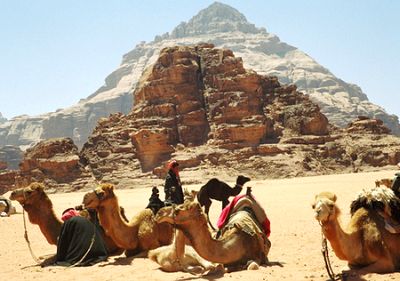
Let’s face it, “Lawrence of Arabia” is one of the best travel movies of all time. I dare you to watch this flick (and, yes, that means you’re going to have to put aside about 3 1/2 hours) and not want to pack your bags and follow in the famed footsteps of T.E. Lawrence (except, perhaps, that part when those footsteps enter that Turkish prison).
Today, that trip would entail traveling from the northern reaches of Syria to the southernmost portion of Jordan, where the country meets the Red Sea in Aqaba. Just outside of the famed city on the sea, in southern Jordan, is Wadi Rumm, or the Valley of the Moon, a swatch of land towered over by sandstone and granite outcrops, akin to Monument Valley, but, you know, not even close.
It is here that The Australian recently visited, taking in the vastness of the region, sleeping under the stars in the surprisingly cold night air, and bumping into local Bedouin nomads, a people whose hospitality is unmatched in the world — even with interloping Aussies who stumble upon random tents in the desert.
[A]lthough we intend only to ask directions, Ouda’s younger brother Ali gently insists we take tea. It would be churlish to refuse and besides, after a chilly night spent under the stars in a remote corner of the wadi, this traditional Bedouin hospitality is welcome.
Then Ouda materializes and lays out mats. The extended family joins us: Ouda’s wife and four young children, his mother, his mother-in-law and his grandmother. The other menfolk are out on the wadi tending their goats. Ali produces a venerable aluminum bowl and fills it with cold water.
He washes the glasses methodically, then pours the steaming tea from a blackened kettle. We drink gratefully. Despite our protestations, the family will not drink until we drain our second glass.
The post Traveling The Land Of Lawrence Of Arabia appeared first on The Expeditioner Travel Site.
]]>The post File Under Reasons I’m Jealous Of Londoners: Weekend Trips To Damascus appeared first on The Expeditioner Travel Site.
]]>
Nothing frustrates me more than when I read about Londoners discussing simple weekend trips to such places as southern Spain, Morocco, or as is the case here, Damascus. (Why isn’t my my house in New York a few thousand miles closer to the European continent?)
Though perhaps a little tougher to explore a few years ago, what with the secret police and all, but “since the more West-leaning Bashar al-Assad came to power, though, things are changing fast.”
For some tips on what to cram in on your enviable weekend, check out this guide, with suggestions including the Umayyad Mosque (one of the world’s largest and oldest), and shopping at the Al-Hamidiyeh souk before ” tucking into fabulous meze, grilled meats (kebab kharaz, lamb in a sour- cherry sauce, is a speciality) and Lebanese wine (restaurants in the Christian quarter all serve alcohol)” at Naranj.
The post File Under Reasons I’m Jealous Of Londoners: Weekend Trips To Damascus appeared first on The Expeditioner Travel Site.
]]>The post Lessons From The Road To Damascus appeared first on The Expeditioner Travel Site.
]]>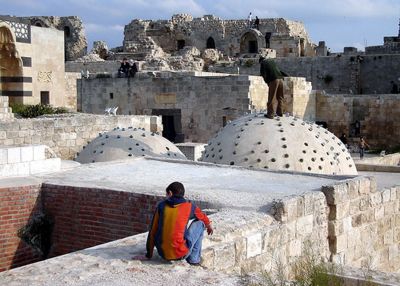
Feel like the world’s getting smaller? A trip to the Middle East will help convince you otherwise. Here’s seven easy lessons to help make sure you’re prepared.
Spending ten days traveling from Istanbul to Damascus promised to be the most exciting trip I’d ever taken — and it was. I’ve never been anywhere so completely different from my own country and culture. It was kind of a surprise, in a reassuring way, to realize that the relentless march of globalization hasn’t yet turned the world into one homogeneous mass. (Damascus must be one of the last places on Earth holding out against the big yellow “M” and the big green “S.” You know who you are.)
And while the locals were all very friendly and helpful, it was also pretty overwhelming at times. Looking back, there were plenty of things that would’ve been useful to know before getting there. So if you’re planning a trip to Syria, or anywhere in the Middle East for that matter, take a cue from my hard-learned lessons and save yourself some unneeded hassle.
Lesson 1: Use The Buses
A full day on a bus in a hot region sounds like a nightmare, but with all the trains canceled we had no other options for the 24-hour trip from Istanbul to Aleppo. A series of canceled trams and other minor disasters meant that we had missed our bus by mere minutes.
As a result, we found ourselves in the hands of a very large, denim-suited Syrian man who was laughing jovially in our faces as we desperately tried to explain our situation. After we finished our story, he happily accepted some additional money from us and loaded us onto another bus leaving a half-hour later. (Another lesson here: Syrians may have a slightly sadistic sense of humor, but they’ll look after you in the end.)
In fact, our panic was completely unfounded — it turns out there are buses leaving every half-hour to pretty much everywhere. Despite their frequency, they’re all full, and it’s easy to see why. With western sitcoms on the TV at the front, a steward bringing round refreshments, and (most importantly) air conditioning filling the cabin, Syrian buses are actually one of the most comfortable places to spend the hottest part of the day. And once you’re in the country, it doesn’t take more than a few hours to get between any of the main towns.
Lesson 2: Enjoy The Food (With Care)
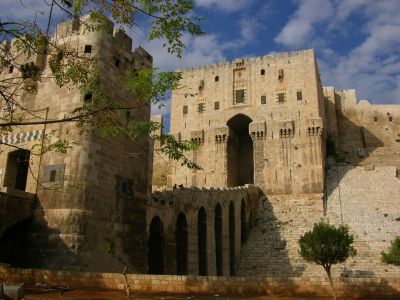 Aleppo’s reputation for some of the country’s best and most distinctive food is well deserved. After a few mad hours racing around the crowded souqs, narrow streets, and impressive citadel with two young Syrian guys (who had adopted us so that they could could practice their English), a nice, relaxing meal in a pleasant restaurant was just what I needed. Beit Sissi, in the old Christian quarter, delivered on all fronts: tasty food, memorable atmosphere, and (while it may be expensive by local standards) great value, with more than enough delicious mezze for the two of us.
Aleppo’s reputation for some of the country’s best and most distinctive food is well deserved. After a few mad hours racing around the crowded souqs, narrow streets, and impressive citadel with two young Syrian guys (who had adopted us so that they could could practice their English), a nice, relaxing meal in a pleasant restaurant was just what I needed. Beit Sissi, in the old Christian quarter, delivered on all fronts: tasty food, memorable atmosphere, and (while it may be expensive by local standards) great value, with more than enough delicious mezze for the two of us.
Less than 24 hours after our arrival in the city we were back on the road. But before we jumped on the next bus, there was time for a last taste of Aleppan cuisine. Outside the station we tucked into an amazing-looking falafel wrap bought from a nearby stand. It was as long as my arm; a meal I’d never forget . . .
. . . which turned out to be only too true a few days later when it came back to haunt me in the form of “the Sultan’s Revenge” (Syria’s answer to India’s “Delhi Belly”). To be fair, I’m not sure that this specific meal was the one to be blamed, but it made me think twice before buying food from a street vendor again for the rest of the trip.
Lesson 3: Do Day Trips
Following Aleppo, food in Hama was disappointing: corn with the color and flavor boiled out (unlike the succulent salted cobs sold on the streets of Istanbul), ice cream that, for some odd reason, tasted distinctly like cigarettes, and the kind of kebabs that give the kebab a bad name.
So food isn’t Hama’s strong point. And — due to the fact that the once beautiful Old Town was wiped out in the massacre of 1982 when the army put down a rebellion — there’s not much to see either, except perhaps for the ancient wooden norias (waterwheels).
Hama’s real strength is its proximity to other sights. In one day we fitted in Krak des Chevaliers, a huge fortress from the Crusades; Masyaf, a smaller castle from the Byzantine era; and Apamea, a city founded in 300BC where you can walk what seems like miles along an awe-inspiring Roman high-street lined by columns. It’s possible to get close to most of these places on local buses, but hiring a driver is amazingly cheap, plus you got the added benefit of a friendly guide who knows the area, makes sure you get to see all the best views, and in our case, even stopped to buy us lunch.
If you haven’t had enough of ruins when you get to Damascus, a trip to Bosra — two hours away from Al-Samiriyeh bus station — is a must. Like so many of Syria’s historic sites, the old Roman town is incredibly well preserved, despite not even being enclosed — it merges into the modern town, and people (plus an ancient camel and several colorfully-decorated horses) are still half living in it. The centerpiece is the almost perfectly intact and very atmospheric second-century Roman amphitheater, now enclosed by a citadel that was added years later.
For a different kind of trip, we took a microbus from Damascus to Maalula. It’s just an hour away, and as we bounced around inside the minivan alongside local travelers and a few boxes of fragrant vegetables and herbs, I got a good view of the barren, sandstone hills that make up the landscape.
At Maalula itself, a pretty village of blue and yellow houses built into the hillside, the surrounding hills are full of gaping holes and interesting formations. At one, you can walk through “St. Thecla’s gap,” a narrow, winding cutting through the rock that, according to Biblical legend, was created by God in a flash of lightning so Thecla could escape her enemies.
Lesson 4: Slow Down And Have A Tea
Despite the energy that fills the cities — especially the souqs — Syrians generally take life at a pretty relaxed pace (unless they’re behind the wheel of a car). Syrians always seem to have time to show you where to go or to chat over a cup of tea. In fact, you get the impression that pretty much all decisions — as mundane as how many bananas to buy to such important ones as a marriage arrangement — are made like this.
Having made it to Damascus, we decided it was time to get into the Syrian spirit. Al-Nawfara Coffee House, by the eastern gate of the beautiful Umayyad Mosque, is a relaxing place to spend an hour or so sipping strong Turkish coffee and inhaling sweetly flavored sheesha. Also by the mosque, Leila’s Restaurant has some of the best views across the city from its roof terrace.
Lesson 5: Leave Space For Souvenirs.
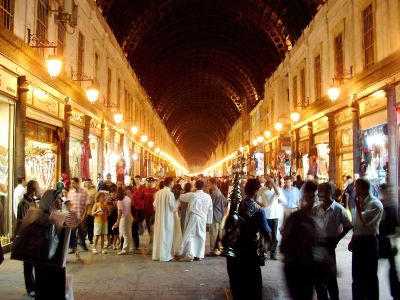 Istanbul’s Grand Bazaar — a soulless mass of cheap crap and rip-off goods that exists purely for the purpose of bleeding tourists dry — left us disenchanted to say the least when we were there. Syria’s souqs, on the other hand, feel like the real deal, full of locals picking up daily supplies amidst piles of colorful materials, huge sacks of spices, giant tea urns, stacks of olive soap, and every part of an animal you can imagine.
Istanbul’s Grand Bazaar — a soulless mass of cheap crap and rip-off goods that exists purely for the purpose of bleeding tourists dry — left us disenchanted to say the least when we were there. Syria’s souqs, on the other hand, feel like the real deal, full of locals picking up daily supplies amidst piles of colorful materials, huge sacks of spices, giant tea urns, stacks of olive soap, and every part of an animal you can imagine.
In Damascus, the Old Town is populated with interesting artisan and antique shops, full of beautiful mother of pearl inlaid furniture, jewellery boxes, backgammon boards, vibrant carpets, and oddities from around the world. One of the most bizarre things I came across while shopping there was a watch featuring Saddam Hussein’s face. You can browse for hours, and the owners seem genuinely happy for you to do so.
Lesson 6: Be Ready For Questions
Since our traveling duo was made up of one western female and one British-Indian Sikh, I’m not sure whether it was me or my boyfriend that attracted more attention, and Syrians have no qualms about expressing their curiosity. Questions we got included: “Where did you get your hat?” (this happened a lot, referring to my boyfriend’s turban), and: “Is she your sister?” (bizarre, especially since we look nothing alike). The most common, though, was simply: “Where are you from?” almost always followed by: “Welcome,” the one word everyone in the country seems to know.
Lesson 7: Don’t Take Anything For Granted
. . . including that what is listed on the menu is actually what is available, that a “No Smoking” sign (even a fancy revolving one) means that people won’t go ahead and light up anyways, or even that your flight will actually ever take off — but that’s an entirely separate story . . .

The post Lessons From The Road To Damascus appeared first on The Expeditioner Travel Site.
]]>